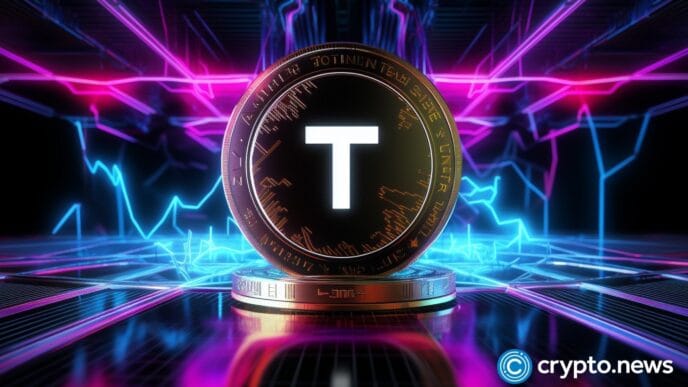Understanding Dogecoin: Origins and Features
Dogecoin was launched in December 2013 by software engineers Billy Markus and Jackson Palmer, who initially created it as a lighthearted alternative to Bitcoin. Inspired by the popular ‘Doge’ meme, featuring a Shiba Inu dog, Dogecoin was designed to be a fun and approachable cryptocurrency, appealing to a broader audience who found other digital currencies complex or intimidating. While its inception was intended as a joke, Dogecoin quickly rose to prominence within the cryptocurrency community.
One of Dogecoin’s distinguishing features is its inflationary nature. Unlike Bitcoin, which has a capped supply of 21 million coins, Dogecoin has no maximum supply limit, making it an inflationary currency. This characteristic means that Dogecoin can continuously be mined, which results in a steady flow of new coins into circulation. The inflationary model is intended to encourage spending rather than hoarding, as holders of Dogecoin can expect to see their holdings reduce in value over time if they do not utilize them.
The Dogecoin community is another essential aspect of this cryptocurrency’s identity. It has developed a robust and active group of supporters who engage in various charitable initiatives and community projects. Over the years, the Dogecoin community has funded several endeavors, including raising money for clean water projects in Kenya and sponsoring NASCAR drivers. This strong community involvement reflects the ethos of Dogecoin, which promotes not only the currency but also social good and camaraderie among its users.
Over time, Dogecoin has gained traction, both in user adoption and recognition among influential figures. Its popularity soared during the crypto boom, particularly in 2020 and 2021 when high-profile endorsements, including those from celebrities and business moguls, further propelled its visibility. As Dogecoin continues to evolve, the question of whether Dogecoin is a good investment remains a topic of discussion among investors and enthusiasts alike.
Market Performance and Trends
Dogecoin, initially launched as a meme-inspired cryptocurrency in December 2013, has exhibited a unique market performance over the years, characterized by significant price fluctuations and growing trading volumes. Since its inception, Dogecoin’s price trajectory has been marked by extreme volatility, driven by various factors including social media campaigns, celebrity endorsements, and the prevailing meme culture that continues to thrive in online communities. These elements have significantly influenced investor sentiment and trading behavior.
Notably, Dogecoin experienced exponential growth in 2021, attributed largely to endorsements from high-profile individuals, such as Elon Musk. His tweets and public comments spurred increased engagement and speculative trading, leading to a dramatic rise in Dogecoin’s market capitalization. As a result, Dogecoin’s trading volume surged, showcasing the cryptocurrency’s ability to capture the attention of a broader audience. However, alongside these peaks, Dogecoin’s price has also faced substantial corrections, highlighting the inherent volatility associated with meme coins.
When assessing Dogecoin’s performance relative to other cryptocurrencies, it is crucial to consider its market trends. Unlike traditional investments, cryptocurrencies exhibit rapid changes that can be influenced by market sentiment and external events. Furthermore, Dogecoin’s performance often contrasts with more established coins like Bitcoin and Ethereum, which tend to exhibit more stability regarding price movements. While Dogecoin attracts a dedicated community of fans and traders, its speculative nature suggests that it may not consistently serve as a reliable investment. Investors must remain vigilant about fluctuating trends and be prepared for the uncertainties inherent in the cryptocurrency market, particularly with assets like Dogecoin, which are often subject to the whims of social media and popular culture.
Investment Potential and Risks
Dogecoin has emerged as a notable player in the cryptocurrency landscape, often viewed through the lens of speculative investment. Its relatively low price and volatility attract investors seeking high returns, positioning Dogecoin as potentially lucrative, albeit risky. Understanding the dogecoin investment landscape requires careful consideration of both its appealing attributes and the risks that come with them.
One of the most compelling aspects of dogecoin is its community backing. Originally created as a joke, the coin has gained a dedicated following, which in many cases serves to bolster its market value. This community involvement creates a sense of collective ownership, influencing price momentum positively during bullish trends. Additionally, increased mainstream adoption of dogecoin, seen in its acceptance by various merchants and service providers, contributes to its investment potential; a rise in usage directly correlates with heightened market interest and investment prospects.
However, the speculative nature of dogecoin also presents significant risks. Its price is highly volatile, with sharp fluctuations that can lead to substantial gains—or equally substantial losses. As a dogecoin investor, one must be prepared for price swings that may appear irrational or disproportionate. Moreover, the regulatory environment surrounding cryptocurrencies remains uncertain, with governments globally reevaluating their positions on digital currencies. This regulatory unpredictability poses a risk, as new laws or restrictions could adversely affect the market and the viability of dogecoin as an investment.
Furthermore, market manipulation has been a concern within the cryptocurrency space. Events such as pump-and-dump schemes can compromise the value of dogecoin, potentially devastating the investments of unsuspecting individuals. In summary, while dogecoin presents unique investment opportunities characterized by its volatile nature and community support, potential investors should remain vigilant, considering the substantial risks involved in this speculative asset.
Expert Opinions and Future Predictions
In assessing the viability of Dogecoin as an investment, it is essential to consider insights from industry experts and market analysts who have closely observed the cryptocurrency landscape. Many thought leaders assert that Dogecoin’s origins as a meme coin do not preclude it from ever being a significant player in the market. For instance, some analysts posit that its strong community support and widespread recognition could bolster its role as a viable investment vehicle, particularly in decentralized finance and online tipping applications.
Market sentiment appears to play a crucial role in determining Dogecoin’s future price trajectory. Institutional investors have begun to explore opportunities within the cryptocurrency sector, and their interest in major coins, including Dogecoin, could signal a broader acceptance of digital assets. An influx of capital from these institutions may contribute to stabilizing Dogecoin’s valuation, making it a potentially attractive investment option.
Technological upgrades also stand as critical factors in the future of Dogecoin. With ongoing discussions about improving transaction speed and scalability, these enhancements could enhance its utility as a medium of exchange, further solidifying Dogecoin’s place in the market. As the cryptocurrency space grapples with evolving regulatory frameworks, it is crucial to determine how regulations will impact Dogecoin. Experts believe that clarity in regulations could either present new opportunities or challenges for Dogecoin, influencing perceptions of Dogecoin as a good investment.
Overall, while forecasts for Dogecoin remain mixed, many analysts advocate for a cautious approach. They recommend that potential investors stay informed about market trends, community developments, and technological advancements as they navigate whether Dogecoin is a good investment for their portfolios.












